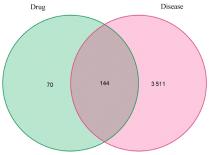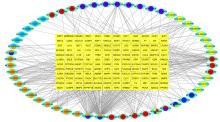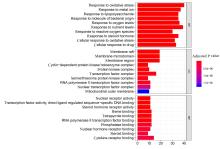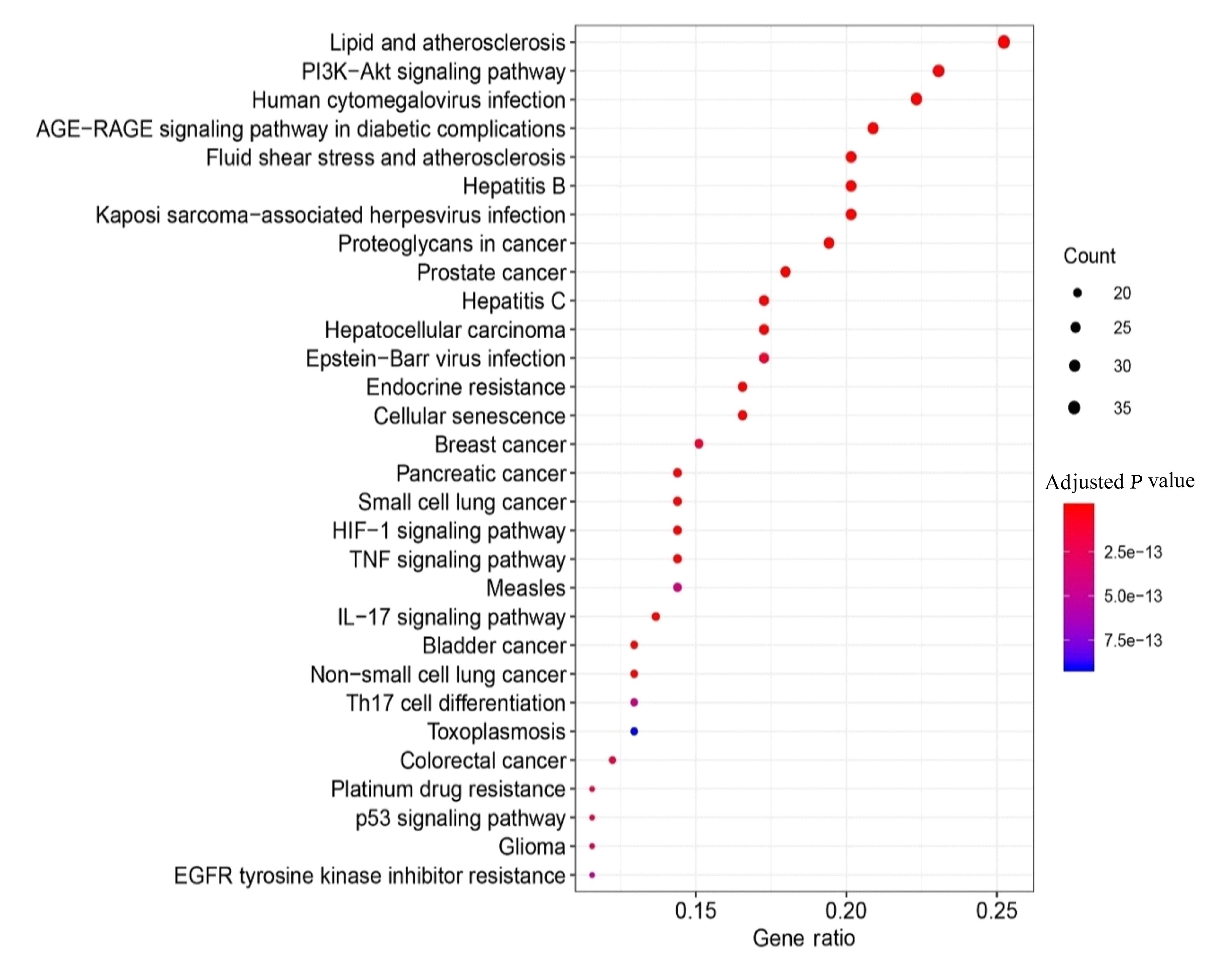| 1 |
CAI Q, HENDRICKS A R. Membranous nephropathy: a ten-year journey of discoveries[J]. Semin Diagn Pathol, 2020, 37(3): 116-120.
|
| 2 |
LAI W L, YEH T H, CHEN P M, et al. Membranous nephropathy: a review on the pathogenesis, diagnosis, and treatment[J]. J Formos Med Assoc, 2015, 114(2): 102-111.
|
| 3 |
KERI K C, BLUMENTHAL S, KULKARNI V,et al. Primary membranous nephropathy: comprehensive review and historical perspective[J]. Postgrad Med J, 2019, 95(1119): 23-31.
|
| 4 |
KIDNEY Disease : Improving Global Outcomes (KDIGO) Glomerular Diseases Work Group. KDIGO 2021 clinical practice guideline for the management of glomerular diseases[J]. Kidney Int, 2021, 100(4S): S1-S276.
|
| 5 |
SAFAR-BOUERI L, PIYA A, BECK L H JR, et al. Membranous nephropathy: diagnosis, treatment, and monitoring in the post-PLA2R era[J]. Pediatr Nephrol, 2021, 36(1): 19-30.
|
| 6 |
VAN DEN BRAND J A J G, RUGGENENTI P, CHIANCA A, et al. Safety of rituximab compared with steroids and cyclophosphamide for idiopathic membranous nephropathy[J]. J Am Soc Nephrol, 2017, 28(9): 2729-2737.
|
| 7 |
RUGGENENTI P, CRAVEDI P, CHIANCA A,et al. Rituximab in idiopathic membranous nephropathy[J]. J Am Soc Nephrol, 2012, 23(8): 1416-1425.
|
| 8 |
刘兆宇, 远 方. 基于文献研究特发性膜性肾病的中医辨治进展[J]. 检验医学与临床, 2020, 17(2): 278-280, 288.
|
| 9 |
陈以平, 邓跃毅, 倪兆慧, 等. 中医方案治疗特发性膜性肾病肾病综合征的前瞻性、随机、对照、多中心临床研究[J]. 中国中西医结合肾病杂志, 2012, 13(6): 471-474.
|
| 10 |
封一帆, 高祥福. 高祥福治疗特发性膜性肾病经验[J]. 浙江中医杂志, 2018, 53(5): 324.
|
| 11 |
杨永超, 刘晓春, 马宝梅, 等. 叶传蕙教授治疗特发性膜性肾病经验[J]. 陕西中医, 2015, 36(1): 78-80.
|
| 12 |
李 洁, 杨 波, 杨洪涛, 等. 中医药治疗膜性肾病的研究综述[J]. 内蒙古中医药, 2021, 40(2): 165-166.
|
| 13 |
赵 凯, 张晓凤, 刘建红, 等. 中西医结合治疗气阴两虚型特发性膜性肾病临床观察[J]. 山西中医, 2017, 33(9): 24-25.
|
| 14 |
蔡 朕, 汪 蕾, 赵文景. 参芪地黄汤治疗特发性膜性肾病气阴两虚型32例疗效观察[J]. 北京中医药, 2019, 38(10): 1029-1032.
|
| 15 |
谢永祥, 苏朝东, 谢丽萍, 等. 参芪地黄汤治疗难治性肾病综合征的疗效及安全性Meta分析[J]. 时珍国医国药, 2018, 29(8): 2015-2019.
|
| 16 |
张 雪, 杨 宁.膜性肾病新型靶抗原研究进展[J].中国实用内科杂志,2022,42(9):782-785.
|
| 17 |
HOPKINS A L. Network pharmacology: the next paradigm in drug discovery[J]. Nat Chem Biol, 2008, 4(11): 682-690.
|
| 18 |
ZHANG R Z, ZHU X, BAI H, et al. Network pharmacology databases for traditional Chinese medicine: review and assessment[J]. Front Pharmacol, 2019, 10: 123.
|
| 19 |
PINZI L C, RASTELLI G. Molecular docking: shifting paradigms in drug discovery[J]. Int J Mol Sci, 2019, 20(18): 4331.
|
| 20 |
CYBULSKY A V. Membranous nephropathy[J]. Exp Mod Renal Dis, 2011, 169: 107-125.
|
| 21 |
汪之玉, 程婉红, 熊维建. 特发性膜性肾病中医诊治概况[J]. 中国民族民间医药, 2020, 29(7): 52-55.
|
| 22 |
吴 颖, 侯承志, 袁 军. 特发性膜性肾病中医药治疗[J]. 世界最新医学信息文摘(连续型电子期刊), 2020, 20(70): 106-107.
|
| 23 |
LU H, WU L F, LIU L P, et al. Quercetin ameliorates kidney injury and fibrosis by modulating M1/M2 macrophage polarization[J]. Biochem Pharmacol, 2018, 154: 203-212.
|
| 24 |
靳英丽, 屈智慧, 杨盼盼, 等. 槲皮素对糖尿病大鼠肾脏足细胞nephrin和podocin表达的影响[J]. 中国实验诊断学, 2019, 23(3): 519-522.
|
| 25 |
张兆洲. 基于“毒损肾络”理论研究槲皮素对TGF-β1诱导的肾小球足细胞向间充质细胞转分化的抑制作用[D]. 兰州: 甘肃中医药大学, 2016.
|
| 26 |
KALBOLANDI S M, GORJI A V, BABAAHMADI-REZAEI H, et al. Luteolin confers renoprotection against ischemia-reperfusion injury via involving Nrf2 pathway and regulating miR320[J]. Mol Biol Rep, 2019, 46(4): 4039-4047.
|
| 27 |
于 倩, 巫冠中. 木犀草素抗炎机制的研究进展[J]. 药学研究, 2019, 38(2): 108-111, 119.
|
| 28 |
LIU Y S, YANG Q, LI S, et al. Luteolin attenuates angiotensin II‑induced renal damage in apolipoprotein E‑deficient mice[J]. Mol Med Rep, 2021, 23(2): 157.
|
| 29 |
FERNÁNDEZ-DEL-RÍO L, SOUBEYRAND E, BASSET G J, et al. Metabolism of the flavonol kaempferol in kidney cells liberates the B-ring to enter coenzyme Q biosynthesis[J]. Molecules, 2020,25(13): 2955.
|
| 30 |
KIM J M, LEE E K, KIM D H, et al. Kaempferol modulates pro-inflammatory NF-kappaB activation by suppressing advanced glycation endproducts-induced NADPH oxidase[J].Age (Dordr),2010,32(2): 197-208.
|
| 31 |
JI X J, CAO J, ZHANG L T, et al. Kaempferol protects renal fibrosis through activating the BMP-7-Smad1/5 signaling pathway[J]. Biol Pharm Bull, 2020, 43(3): 533-539.
|
| 32 |
TAO X F, YIN L H, XU L N, et al. Dioscin: a diverse acting natural compound with therapeutic potential in metabolic diseases, cancer, inflammation and infections[J]. Pharmacol Res, 2018, 137: 259-269.
|
| 33 |
QI M, YIN L H, XU L N, et al. Dioscin alleviates lipopolysaccharide-induced inflammatory kidney injury via the microRNA let-7i/TLR4/MyD88 signaling pathway[J]. Pharmacol Res, 2016, 111: 509-522.
|
| 34 |
ZHANG Y, JIN L J, LIU J C, et al. Effect and mechanism of dioscin from Dioscorea spongiosa on uric acid excretion in animal model of hyperuricemia[J]. J Ethnopharmacol, 2018, 214: 29-36.
|
| 35 |
YAMASHITA K, KAJSTURA J, DISCHER D J,et al. Reperfusion-activated Akt kinase prevents apoptosis in transgenic mouse hearts overexpressing insulin-like growth factor-1[J]. Circ Res, 2001, 88(6):609-614.
|
| 36 |
LIN H Y, CHEN Y, CHEN Y H, et al. Tubular mitochondrial AKT1 is activated during ischemia reperfusion injury and has a critical role in predisposition to chronic kidney disease[J]. Kidney Int, 2021, 99(4):870-884.
|
| 37 |
CARRANZA K, VERON D, CERCADO A, et al. Cellular and molecular aspects of diabetic nephropathy; the role of VEGF-A[J].Nefrologia,2015,35(2):131-138.
|
| 38 |
RAYEGO-MATEOS S, RODRIGUES-DIEZ R, MORGADO-PASCUAL J L, et al. Role of epidermal growth factor receptor (EGFR) and its ligands in kidney inflammation and damage[J]. Mediators Inflamm, 2018, 2018: 8739473.
|
| 39 |
CHEN F E, GHOSH G. Regulation of DNA binding by Rel/NF-κB transcription factors: structural views[J]. Oncogene, 1999, 18(49): 6845-6852.
|
| 40 |
KAJIHARA T, UCHINO S, SUZUKI M, et al. Human chorionic gonadotropin confers resistance to oxidative stress-induced apoptosis in decidualizing human endometrial stromal cells[J]. Fertil Steril, 2011, 95(4):1302-1307.
|
| 41 |
黎雾峰,王 晶,王 毅,等.参芪地黄汤联合海昆肾喜胶囊辅助治疗对慢性肾衰竭患者肾功能及氧化应激的影响[J].现代中西医结合杂志,2020,29(29):3222-3225.
|
| 42 |
许 帅,廖华君,钟玉梅,等.中医药通过PTEN/PI3K/Akt信号通路防治糖尿病肾病的研究进展[J].中华中医药杂志,2019,34(9):4190-4192.
|
| 43 |
岑祥莹,陆元兰,王怡宁,等.IL-17和NF-κB信号通路在敌草快中毒后肾损伤中的作用及相互关系[J].中国现代医学杂志,2020,30(23):42-45.
|
| 44 |
SUN B, WANG H, ZHANG L, et al. Role of interleukin 17 in TGF-beta signaling-mediated renal interstitial fibrosis[J]. Cytokine, 2018, 106: 80-88.
|
| 45 |
黄艳丽,李征锋,吴 滢,等.基于参芪地黄汤治疗的糖尿病肾病与炎症反应相关性的Meta分析[J].海南医学院学报,2020,26(19):1501-1508.
|
| 46 |
田锋,吴宸广,陈明,等.基于网络药理学探讨参地补肾胶囊抗肾间质纤维化的机制研究[J].中国中医药科技,2021,28(3):393-400.
|
 )
)














